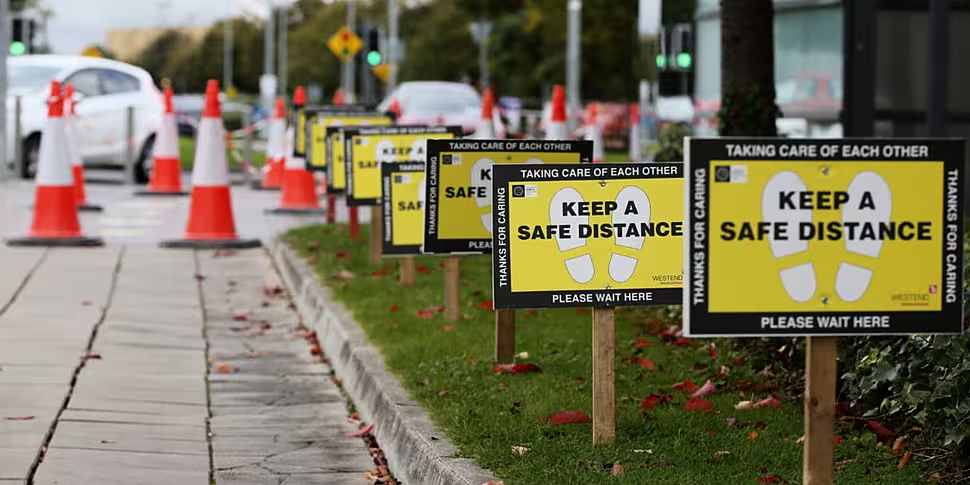Household visits are banned nationwide as new restrictions came into effect overnight.
Exceptions can be made for compassionate grounds and essential reasons like childcare, providing care to elderly or vulnerable people, and in particular those who live alone.
In outdoor settings away from a home or garden, up to six people from no more than two households can meet while maintaining strict social distancing - including for outdoor exercise and dining.
The measures will remain in place until Tuesday November 10th.
Health officials say they are also looking at 'additional guidance' for people who live alone.
Deputy Chief Medical Officer Ronan Glynn said on Thursday that NPHET has considered the issue, including around international practices such as 'social bubbles'.
In the UK, 'support bubbles' have been developed which allow people who live alone to have a social network with people from one other household.
Chief Medical Officer Dr Tony Holohan said being alone for a long period of time is "a very difficult challenge socially".
He said: "Nobody wants to be in a situation where we're having to ask of the public that we don't mix or meet up in other households.
"Given that, we want to try to make that as easy as possible for people - so we're going to look at developing some additional guidance."
14-day incidence rates
While Cavan, Monaghan and Donegal are now under level four restrictions - meaning shops that sell non-essential items are not allowed to open for four weeks.
It comes as 1,205 new cases and three additional deaths were confirmed in Ireland on Thursday.
It brings the number of cases to date to 46,429, and the number of deaths to 1,205.
It was the second day in a row of record new cases.
Of Thursday's cases, 288 were in Dublin, 173 in Cork, 123 in Meath, 97 in Galway, 63 in Cavan and the remaining cases were spread across all other counties.
Meanwhile Ballyjamesduff in Co Cavan has the highest 14-day incidence rate than any other local area in the country.
It has an incidence rate per 100,000 of over 651.
The area has overtaken Lifford-Stranorlar in Donegal, which has risen in the past week to a rate of 610.
There are concerns about the situation in cities with Cork South-Central and Galway City Central both having rates of more than 550.
Gorey in Co Wexford has seen a rise of over 400% in the past week to have a rate of 533.
Other areas with a 14-day incidence rate of more than 400 include Granard in Co Longford, Ennis in Co Clare and the Monaghan electoral district.
Meanwhile, the highest in Dublin is Ballyfermot-Driminagh on more than 310.
A number of local electoral areas continue to have rates of less than five - including Lismore in Co Waterford, Ballinamore in Co Leitrim and Thurles in Co Tipperary.
Additional reporting: Ben Finnegan









